- Established 1982 -HOME: www.hiltonpond.org
THIS WEEK at HILTON POND Subscribe for free to our award-winning nature newsletter (Back to Preceding Week; on to Next Week) |
Our 30th Costa Rica-East (Paraíso/Ujarrás) Contact Holbrook Travel to register today! Come be an integral part of a real citizen-science project! |
APRIL BIRDS GALORE, AND WILDFLOWERS, TOO As usual, April was a very busy month at Hilton Pond Center as Mother Nature continued to awaken from her winter slumber. Native wildflowers were showing their stuff, green-up was underway with trees leafing out, and migratory birds were making their move from the Neotropics to Hilton Pond . . . and beyond. Our traps and mist nets were especially busy; we banded 21 different species of birds (178 individuals) and had an astounding number of recaptures (73 individuals from 14 species), including numerous "geriatric" birds from four to at least ten years old! Among our encounters were nine new Ruby-throated Hummingbirds and ten hummer returns from previous years. As always, tallies of all newly banded birds and recaptures are provided at the bottom of this page, so please do scroll on down after reading our latest photo essay. This week it's a recap of some interesting natural occurrences we observed and documented at the Center during April 2018.
All text, maps, charts & photos © Hilton Pond Center Just before dusk on 2 Apr 2018 we banded our first Ruby-throated Hummingbird (RTHU) of the season at Hilton Pond Center--an adult male, of course, since females usually don't show here until the end of the second week in April at earliest. (This male was seven days later than our early record for a new RTHU at the Center. We never did catch the banded male that this year appeared at a local feeder on 28 March.) Light was waning so we couldn't get a super-sharp photo of today's bird, but we wanted to share the above image anyway because it shows his gorget wasn't exactly ruby-colored; instead, its had a bronzy or orangey cast to it. We mention this because there is a great deal of individual variation in "red" throat feathers of male RTHU. It may even be this iridescence changes through the season; by mid-winter in Costa Rica many adult males we capture have gorget feathers whose tips are bronze but whose bases are red--implying that wear and tear and maybe UV light degrade feather structure that causes the metallic red appearance. Incidentally, for those who are concerned capture and banding of such tiny birds is traumatic for them, this particular male was caught in a second trap about five minutes after banding and first release! (We've even had "trap junkies" at the Center that get caught repeatedly in the same trap--sometimes in several later years!) All text, maps, charts & photos © Hilton Pond Center
All text, maps, charts & photos © Hilton Pond Center Resident bird bander Bill Hilton Jr. was away from Hilton Pond Center for several days in early April for preliminary surgery prior to radiation seed treatment for prostate cancer in early July. He returned home on the afternoon of 5 April for a glorious blue-sky view of the pond (above), with Flowering Dogwoods coming into full bloom. In broad daylight a Barred Owl hooted from a tree above the old farmhouse. Of special interest was our first 2018 spring sighting of a female Ruby-throated Hummingbird at a feeder--several days earlier than our previous banding record of 8 April for a female RTHU. All text, maps, charts & photos © Hilton Pond Center
All text, maps, charts & photos © Hilton Pond Center On 8 April we finally banded our 300th bird of the year at Hilton Pond Center--a Chipping Sparrow. Although 300 may seem like a lot of birds, it was well behind where we normally would be after the first quarter. Many years we get to that mark by the end of January, or mid-February at latest. Granted, we were gone from the Center for more than three weeks since 1 January--counting two hummingbird research trips to Costa Rica and a recent hospital stay; even so, birds have been very scarce locally, in large part because the "winter finches" were mostly absent. Pine Siskins and Purple Finches (two of our top four species) never appeared, while House Finches and American Goldfinches (the other two of the top four) have been here in much lower numbers than usual. (Of all birds banded this year through April, 229 were goldfinches and 33 were House Finches--comprising nearly two-thirds of all bandings in 2018; we also banded 62 Chipping Sparrows.) Other birds also have been quite scarce, particularly Dark-eyed Juncos, White-throated Sparrows, and Yellow-rumped Warblers (see photo above for a female in non-breeding plumage). Even usually abundant Northern Cardinals are greatly reduced in number at the Center. We can explain the scarcity of Pine Siskins and Purple Finches by noting their natural food was especially abundant this winter in Canada and they didn't migrate south, but we're at a loss on the other species. (We do speculate, however, that our local cardinals never rebounded from deadly effects of West Nile Virus in the late 1990s; in addition, vegetational succession has eliminated much of the brushy vegetation Northern Cardinals seem to prefer.) All we can say is this: In nature every year us different . . . and some years are more different than others. All text, maps, charts & photos © Hilton Pond Center
All text, maps, charts & photos © Hilton Pond Center Thanks to very peculiar weather, two Neotropical hummingbird research trips, and that recent prostate surgery, we barely had time to deploy mist nets in 2018 at Hilton Pond Center. (All 300+ birds banded through 9 April were caught in various traps.) On the 10th, however--and despite early morning chill--we were determined to run nets lest we miss out on capturing the last of our winter residents AND the first arriving spring migrants. (We also were after a couple of Ruby-throated Hummingbirds that have been avoiding our traps.) We set just four nets close to the house to minimize exertion but were amply rewarded by 23 new birds of nine species: Chipping Sparrow 7, American Goldfinch 5, Yellow-rumped Warbler 3, Northern Cardinal 2, White-throated Sparrow 2, and one each of Carolina Chickadee, House Wren, Black-and-white Warbler, and Ruby-crowned Kinglet. We also recaptured several sexually monomorphic Carolina Chickadees and Tufted Titmice that had been banded last year but not sexed; now that they're in breeding condition we were able to determine whether they are male or female--enhancing the data base for local resident species. Interestingly, we almost caught an adult Barred Owl pursuing something across the yard, but it bounced out of the net! The Black-and-white Warbler (BAWW) we captured on the 10th was a second-year bird that hatched last year. Here in the Carolina Piedmont this species rarely overwinters, so nearly all our BAWW migrate at least a little further south--even as far as Central America and very northern South America--and return in early spring. The highly contrasting black and white plumage of this bird is striking, with the adult female resembling an adult male except for her paler cheek (see photo above).
All text, maps, charts & photos © Hilton Pond Center Black-and-white Warblers are particularly interesting because of their non-warblish behavior. Rather than fluttering about in the canopy and gleaning newly hatched caterpillars from equally fresh spring leaves, BAWW forage from ground to tree-tops, often walking along limbs while using their unusually stout bills (see mug shot above) to probe for invertebrates hidden in bark crevices. In fact, thanks to a very long hind toe (hallux) on each foot (see photo above), a Black-and-white Warbler is a tree-clinger, navigating up, down, and across vertical tree trunks with all the ease of a nuthatch or woodpecker. At the Center we've even seen them walking upside down on the underside of a big limb. All text, maps, charts & photos © Hilton Pond Center
All text, maps, charts & photos © Hilton Pond Center Almost every afternoon at Hilton Pond Center an owl starts to hoot from a dense cluster of English Ivy in a Flowering Dogwood tree right above the back deck. "Who cooks for you, Who cooks for you all" is an English version of the bird's vocalizations--a sure sign the calls are coming from a Barred Owl. The tooting is deep and resonating, and more often than not there is a response from a big Sweetgum on our neighbor's property. The second call is similar but higher in pitch, indicating we've been listening to a Barred Owl pair--with the male's voice being basso profundo. That's the male in our photo above with his neck puffed up; he's about a third smaller than the female, which we haven't yet been able to photograph. On 12 April when we saw her fly into the tree from which she calls she suddenly disappeared. Scanning the limbs with binoculars we found an angled snag a foot or so in diameter about 60' up; the snag was open on the end and with smooth edges, so it may the pair's nest. (Barred Owls are cavity nesters.) Owlets typically hatch by about mid-April, so we'll be watching the snag closely. As soon as chicks leave the nest a cacophony of vocalizations will begin; a family of Barred Owls sounds like a troop of jungle monkeys!
All text, maps, charts & photos © Hilton Pond Center Barred Owls are the Center's most easily observed owl species, mostly because the often fly around and hunt in full daylight. They're "crepuscular," meaning active at dawn and dusk, while most owls are primarily nocturnal. Our other three documented local species are Great Horned Owl, Eastern Screech-owl, and Northern Saw-whet Owl; GHOW is the only one of the four we've not banded at Hilton Pond, and Barred Owl is the only one with dark eyes (see top photo). Years ago we did find a single Barn Owl feather (above) on the property, but we're not counting it for the Yard List! All text, maps, charts & photos © Hilton Pond Center
All text, maps, charts & photos © Hilton Pond Center We don't have a lot of very early spring wildflowers at Hilton Pond Center, but by mid-April quite a few species are in bloom. One of our all-time local favorites is pink-flowered Pinxter-flower, Rhododendron periclymenoides (above), a wild azalea native to the eastern U.S. from South Carolina/Georgia northward. (This species was previously called R. nudiflorum--a more descriptive name because the shrub typically blooms before foliage appears. Leaves catch up quickly; by the time the last blooms appear a shrub typically has a full complement of leaves.) We have one prime ten-foot-tall specimen at the Center that flowers profusely and must be at least 50-60 years old. It grows close to the highway in front of our old farmhouse and was narrowly missed when the state recently cleared roadside vegetation. (Whew!) The name "pinxter" comes not from the flowers' coloration but from Dutch words "Pinxter blomachee," which relate to the fact that this azalea supposedly blossoms on Pentecost, 50 days past Easter. We suspect this name was given by folks in northern parts of the plant's range, since in the Carolinas Pinxter-flower is more likely to be in bloom for Easter Sunday itself. Some nurseries offer hybridized varieties of Pinxter-flower that are either red or white. To that we respond: Why mess with the perfection of the wild type? Just because you can inter-breed a native species for various traits doesn't mean you should. All text, maps, charts & photos © Hilton Pond Center
All text, maps, charts & photos © Hilton Pond Center On 19 April we were pleased to see abundant blossoms of Little Sweet Betsy, Trillium cuneatum, around the hand-dug well behind our old farmhouse. (T. cuneatum is sometimes called Toadshade Trillium because the variegated bracts with shades of green and silver somewhat resemble the back of a toad. That common name, however, is best reserved for the very similar T. sessile, which has smaller bracts and flowers.)
All text, maps, charts & photos © Hilton Pond Center As the genus name indicates, trilliums all have three-part foliage, with a central flower also divided into threes. Interestingly, what most people call "leaves" in trilliums are not; these are bracts that function in photosynthesis and draw attention to the flower. Trilliums are native to temperate regions of North America and Asia but are grown world-wide as hardy garden flora. Each plant arises in spring from a subterranean rhizome. We have a half-dozen or so specimens of T. cuneatum growing around the well, all offspring from an individual we bought years ago at a native plant sale. (NOTE: Never collect native plants from the wild unless they are in danger from human development such as road-building or housing construction. Buy native plants ONLY from nurseries that propagate them from seed, cuttings, or tissue cultures.) Since many trilliums bloom early before native bees are very active, it's likely most are pollinated by flies and beetles. Fertilized flowers produce seeds bearing elaiosomes, fleshy structures containing fats and proteins. Ants are attracted to this energy-rich food source and haul trillium seeds to their nests. After feeding elaiosomes to their larvae, worker ants discard the now-naked seeds in their ant colony waste midden--a naturally fertile microhabitat ideal for trillium seed germination and growth. All text, maps, charts & photos © Hilton Pond Center
All text, maps, charts & photos © Hilton Pond Center As the sun came up on 21 April at Hilton Pond Center, we were greeted by a thirsty flock of 20-plus Cedar Waxwings, drinking animatedly from a recirculating water feature outside our office window (see photo above). We believe Waxwings--if we may make a Human Value Judgment (HVJ)--are the most elegant songbirds in North America, with jaunty crests, black masks, silky-looking plumage, yellow tail tips, and red waxy ends on their secondary wing feathers. Not all individuals have red tips, however, with this feature more common in older birds. Red tips are also not a sign of gender, although males can sometimes be differentiated by a wider, darker expanse of blackish coloration on their throats.
All text, maps, charts & photos © Hilton Pond Center Waxwings are highly social, moving about in nomadic flocks and sometimes even nesting in semi-colonial fashion in a single tree containing several nests. There are a few breeding records for Cedar Waxwings in South Carolina, but for the most part the species nests in the upper tier of states across the northern U.S. and in southern Canada. (NOTE: We have encountered a few waxwings in warm weather months here at the Center, and we banded two on 20 April this year.) Winter flocks range as far south as Panama. Waxwings are the consummate berry-eaters (frugivores), dining on fruit of Eastern Red Cedar, various dogwoods, hawthorns, and Serviceberry, among others. (When waxwings eat berries from non-native plants such as Pyracantha and Tatarian Honeysuckle their yellow tail tips turn orange or salmon in color.) During the breeding season waxwings also capture protein-rich insects such as dragonflies and mayflies they feed to their nestlings. All text, maps, charts & photos © Hilton Pond Center
All text, maps, charts & photos © Hilton Pond Center If ever there were a "Blackberry Winter" it has been the one we experienced in April 2018 at Hilton Pond Center. That phrase comes from the old contention that after spring has arrived and the blackberries bloom, there will be another cold spell--a "Blackberry Winter." At the Center, blackberries started showing their flowers last week--when the temperature actually went a little below freezing one night. The blackberry blossom (Rubus sp.) in our photo above opened on 22 April. This one was a bit atypical for a flower in a member of the Rose Family (Rosaceae), in which this plant is classified. Do you know how it's unusual? (Keep treading, please. The answer is below.) We had far more blackberry vines at Hilton Pond Center in the early days. In fact, when we brought the property in 1982 it was mostly grassland, with a few seedling trees and young blackberries just starting to sprout. As we laid out the nature trails 37 years ago, we carefully avoided woody seedings and blackberry patches, hoping trees would grow and blackberries would eventually produce those sweet juicy fruits that are one of nature's most delicious summertime treats. Our bounty lasted for a few years but the trees DID grow, shading out nearly all the blackberry thickets. These days we have scattered blackberries growing in various small open spots, making the few fruits they produce even more delectable.
The floricane usually dies after flowering and is replaced by one or more new ones during the following growing season. Blackberry pollination is typically by bees--including imported Honeybees a variety of native species. Did you figure out what's unusual about the blackberry flower in our photo above? Here's the secret: Members of the Rose Family are five-parted, and this particular flower has six petals. It'll be interesting to watch as the adjoining buds open to see if they, too, are aberrant. (So far, they aren't.) The 22nd of April in 2018 was the 48th anniversary of Earth Day. No matter what the calendar says, it also is "Blackberry Winter" at Hilton Pond Center, where EVERY day is Earth Day. All text, maps, charts & photos © Hilton Pond Center
All text, maps, charts & photos © Hilton Pond Center Heavy rain (2.61") struck Hilton Pond Center on 23 April, so we stayed indoors crunching bird banding data (necessary, but the only thing about banding that isn't fun). With no mist nets deployed, we turned instead to the above photo of one of four Yellow-rumped Warblers captured the previous day. Curiously, we netted two males--one second-year and one after-second-year--and two females of those same two age classes. The image is of the older "adult" male in full breeding plumage--we hope a feast for your eyes. Among Yellow-rumped Warblers (MYWA, formerly called "Myrtle Warblers"), breeding males have very black cheek patches and dark feathers that are truly black. Breeding females have cheeks of gray and plumage that is less dark. Both sexes have gray backs and distinctive yellow rumps (hence the nickname "butterbutt"), yellow wing-pits, and a yellow crown that often is not visible from a distance. Immature first-winter birds are sometimes so nondescript as to be hard to identify; look for the yellow rump, split eye ring, and more or less prominent flank streaking. We've long-speculated MYWA are the second-most-common Wood Warblers (Parulidae) in the world, perhaps exceeded only by Tennessee Warblers. One thing for sure: Yellow-rumps are THE winter warbler here at Hilton Pond Center, where they first show up in early fall and stay through early May. During the past 37 years they have been our eighth-commonest species with 2,295 banded--far ahead of the next-most-prevalent of our 35 locally encountered parulids: American Redstart (466) and Magnolia Warbler (424).
All text, maps, charts & photos © Hilton Pond Center When butterbutts wintering in the Carolina Piedmont depart, they head north to upper New England and virtually all of Canada, where they nest in coniferous forests. They are mainly insectivores on the breeding grounds but in winter take all sorts of berries, especially those of Greenbrier, Poison Ivy, junipers, and wild grapes. On cold days at the Center we've seen them pecking suet or foraging on the ground beneath seed feeders. We suspect Yellow-rumped Warblers are under-appreciated because they are nearly ubiquitous and relatively plain-plumaged all winter. Nonetheless, we will miss them when they're gone--especially now that our hyperactive butterbutts are acquiring such striking breeding attire. All text, maps, charts & photos © Hilton Pond Center
All text, maps, charts & photos © Hilton Pond Center The 26th of April was a perfect day to run mist nets at Hilton Pond Center: Overcast, no wind, mild temperatures, and--perhaps most important--spring bird migration is beginning to click. The day's catch was diverse and interesting; we probably would have caught more except a light, cold sprinkle started about 5 p.m., and it's never good to net birds in wet weather. Totals for the slightly shortened outing: Five American Goldfinches, two Black-and-white Warblers, two Northern Parulas, and one each of Chipping Sparrow, Northern Cardinal, Worm-eating Warbler, American Redstart, Mourning Dove, White-throated Sparrow, Eastern Bluebird, and Ruby-throated Hummingbird. We really liked the Worm-eating Warbler--we've banded only 52 of them at the Center in 37 years--but for eye appeal it was hard to pass up those two Northern Parulas (NOPA) as our favorite species of the day. The one in the attached photo was a tad more colorful, possibly because he was an after-second-year bird; the other hatched in 2017 and was at least a year younger. (For the record, we've banded just 72 NOPA at Hilton Pond since 1982.)
All text, maps, charts & photos © Hilton Pond Center Northern Parulas are among the smallest of or North American Wood Warblers, measuring a mere 3.75" long. By comparison, a Louisiana Waterthrush is a hulking 5.25" in length. What a male parula lacks in size, however, he more than makes up for in color and markings: Broken bright white eye ring, bi-colored bill, blue head and wings and rump, prominent white wing bars, back of nearly indescribable greenish-yellow, white belly, yellow chin, and necklace of rust and blue-black. Quite the plumage, don't you think? (Females are less colorful and lack a prominent necklace.) Northern Parulas overwinter in southern Mexico, Cuba, and islands of the Caribbean. They breed across much of the eastern half of the continental U.S. and very southern Canada, avoiding only the areas around the more southerly Great Lakes. Within their nesting range NOPA are found most often in mature forests near bottomland streams, ponds, and swamps. In the southern U.S. parulas construct nests of epiphytic Spanish Moss; elsewhere they use stringy true mosses and lichens. Locally we have captured female NOPA with active brood patches--pretty strong evidence they breed at or very near Hilton Pond Center. Parulas are among the most frenetic of our parulids, constantly flitting about as they glean insects, spiders, and other invertebrates from leaves and small branches. The words "parula" and "parulid" come from the Latin "parra," a bird whose call was thought to be an ill omen; why that name was applied to this tiny warbler and its relatives is any body's guess. In closing, we will refrain from getting involved in the touchy debate over how one should pronounce "parula." Some folks say "pah-rule-ah," some say "pair-you-la." One of those is a lot harder to say, but we leave it to you to choose. All text, maps, charts & photos © Hilton Pond Center
All text, maps, charts & photos © Hilton Pond Center A damp, cool, foggy morning and a bunch of off-site errands interfered with running mist nets on 27 April at Hilton Pond Center, although we did capture two American Goldfinches in a trap baited with black sunflower seeds. Fortunately, we took lots of photos the previous day when we handled a variety of birds--one of which was a Worm-eating Warbler. That's him/her in the photo above. (WEWA are sexually monomorphic, with males and females looking alike to human eyes. We suspect the warblers themselves have no such trouble when mating time rolls around.) Worm-eating Warblers are mis-named to start because they don't eat "worms"--unless you consider that to be a synonym for "caterpillar." WEWA use their heavy pinkish bills to glean insect larvae--plus the occasional spider or slug--from low shrubs in mature forests, where they nest on steep hillsides with dense understory and shrub layers. (NOTE: WEWA legs and toes are also pink.)
All text, maps, charts & photos © Hilton Pond Center Unlike most of our colorful Wood Warblers, WEWA lack yellow in their plumage and fit into that small cadre of brown warblers: Ovenbird, Swainson's Warbler, and the two waterthrushes. Worm-eating Warblers are nonetheless quite distinctive, with prominent blacks stripes on a buff-colored head. WEWA nest in the eastern U.S., primarily in the Blue Ridge and Appalachian Plateau. To our knowledge we get them only during migration at Hilton Pond, although there are scattered breeding records in South Carolina from the Coastal and Mountain Provinces. Whatever their location, as ground-nesters Worm-eating Warblers and their chicks sometimes fall prey to feral cats. When fall arrives WEWA disappear from the continental U.S., wintering in southern Mexico, coastal areas of Central American, and in the Western Caribbean. All text, maps, charts & photos © Hilton Pond Center
All text, maps, charts & photos © Hilton Pond Center Even though we ran mist nets all day on 28 April at Hilton Pond Center, we caught very few birds. Bright sun made the mesh more visible, but the big impediment was a slight wind that caused hundreds and hundreds of flowers and catkins to rain down from oaks, hickories, and wild grapevines in the canopy overhead. Most of them, it seems, got caught in one or the other of our nets. That's a big the downside of deploying nets in spring--almost as bad as autumn when falling leaves are an even bigger problem. Even so, it's obligatory to run nets spring and fall to get a handle on which, when, and how many migrants are passing through. We had about given up on having a "Bird of the Day" on the 28th until--on the last check before shutting down for the evening--we encountered a bright yellow bird in the top shelf of a net. As soon as we saw the head (above), with sharply pointed black bill and thin black line through the eye, we knew what we'd caught: Blue-winged Warbler--only our 24th locally in 37 years!
All text, maps, charts & photos © Hilton Pond Center Of all the mostly yellow parulids with unstreaked breasts (Prothonotary, Yellow, Kentucky, and Wilson's Warblers, plus Common Yellowthroat), only the Blue-winged Warbler (BWWA) has prominent wing bars. Males and females are similar, with the male having larger, whiter wing bars. The female also has a bit of a hood, so we determined it was a second-year female we caught and photographed. (CAVEAT: Some individuals are not reliable sexed, even in the hand.) Blue-winged Warblers winter on the Caribbean coast of Mexico and Central America and breed most commonly in Atlantic Coastal and southern Great Lakes states, with scattered pockets elsewhere. This is one of those species that benefits from clear-cut or naturally burned forests; the Blue-winged Warbler's favored habitat is shrubby areas with trees under 10' tall. In southeastern West Virginia we've seen robust populations of BWWA in "reclaimed and restored" strip mine sites, where they out-compete (and hybridize with) the closely related and soon-to-be-endangered Golden-winged Warbler. Incidentally, if you see a yellow warbler hanging upside-down and acting rather like a chickadee, it's probably a Blue-winged Warbler. All text, maps, charts & photos © Hilton Pond Center Don't forget to scroll down for Nature Notes & Photos, 
Checks can be sent to Hilton Pond Center at: All contributions are tax-deductible on your |
|---|
|
"This Week at Hilton Pond" is written and photographed by Bill Hilton Jr., executive director of Hilton Pond Center for Piedmont Natural History
|
|
|
Please refer "This Week at Hilton Pond" to others by clicking on this button: |
Comments or questions about this week's installment? Send an E-mail to INFO. (Be sure to scroll down for a tally of birds banded/recaptured during the period, plus other nature notes.) |

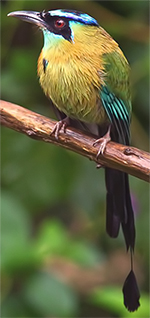

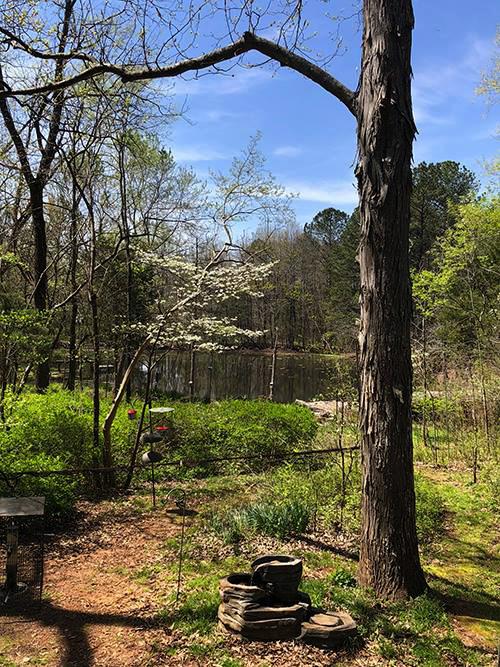
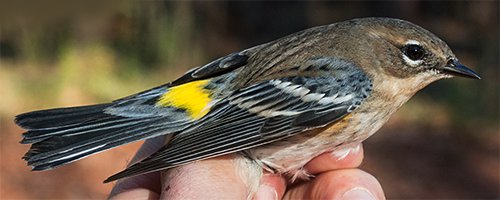
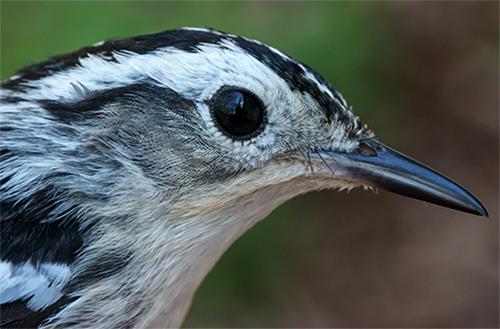
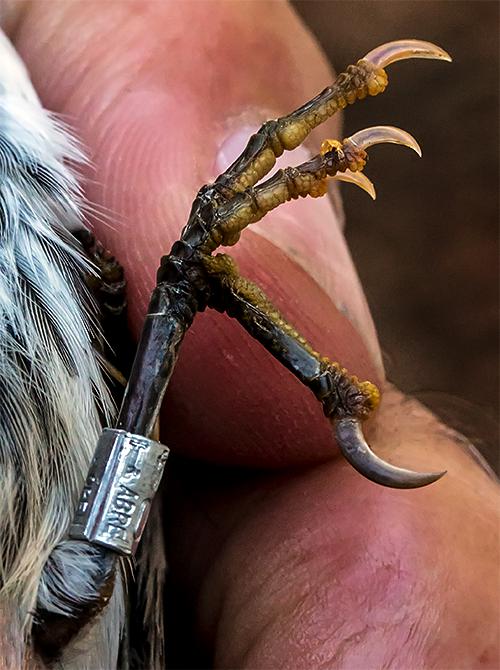
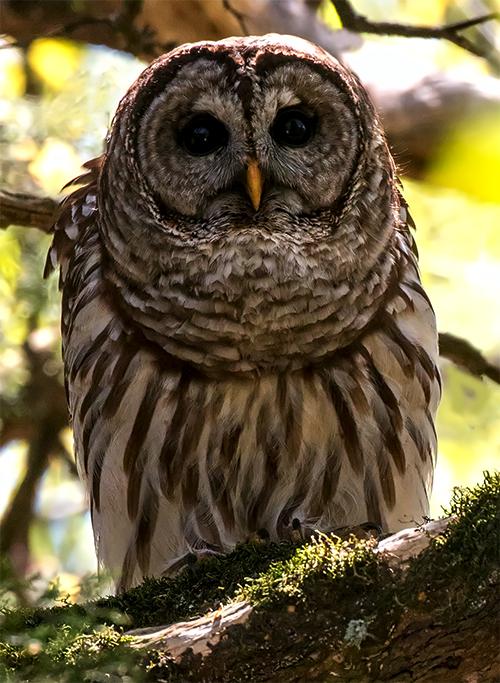
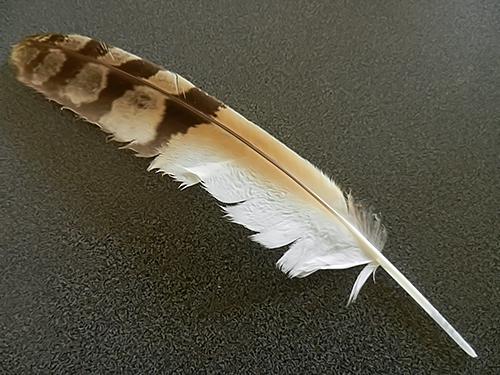



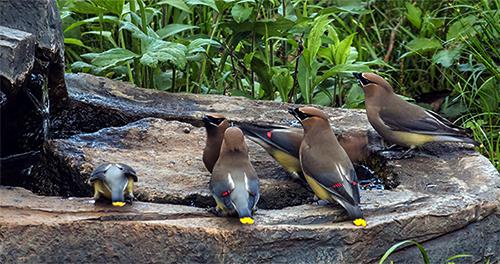
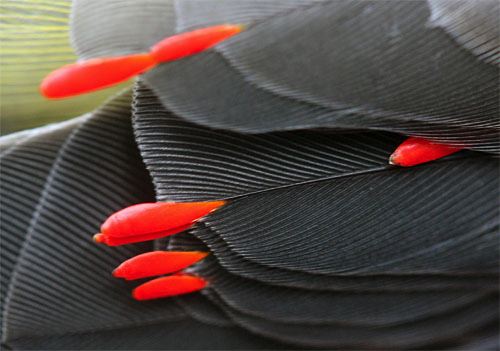
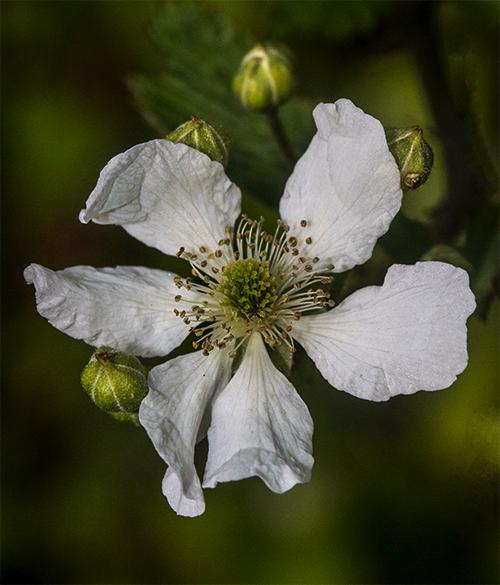
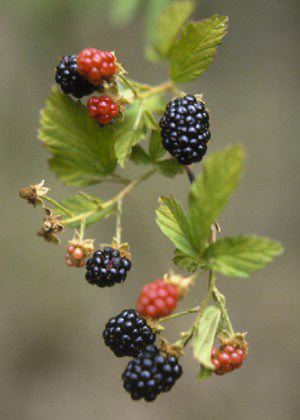 It takes two years for a wild blackberry to make fruit
It takes two years for a wild blackberry to make fruit 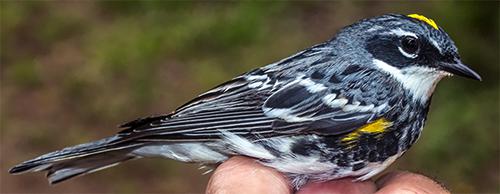
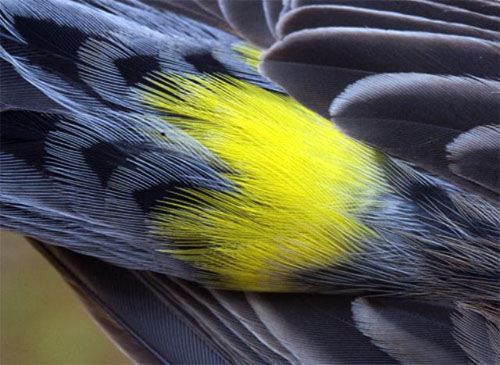
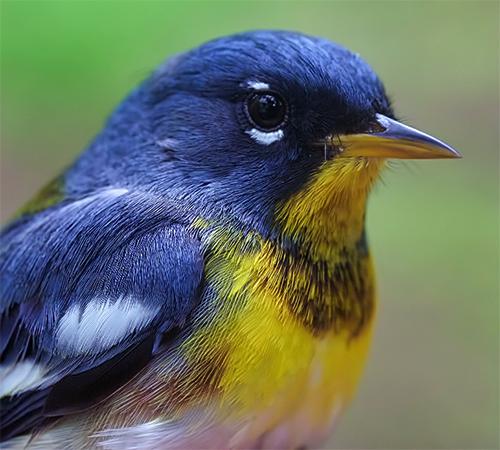
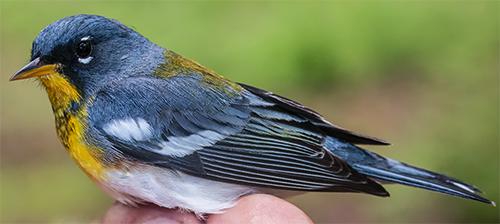

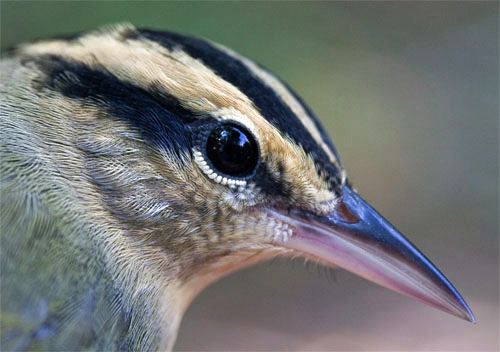
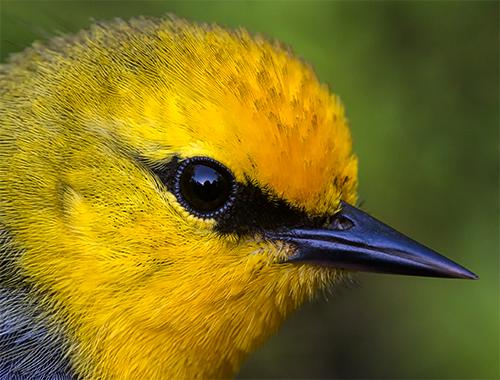
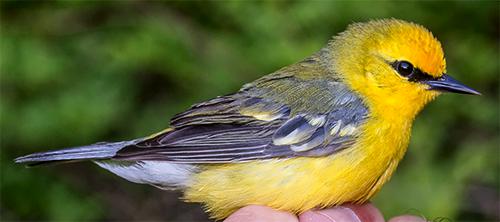








 Please report your
Please report your